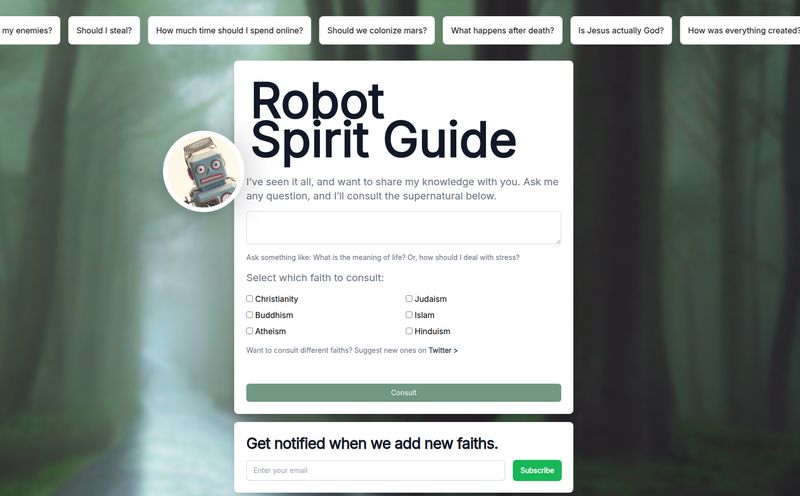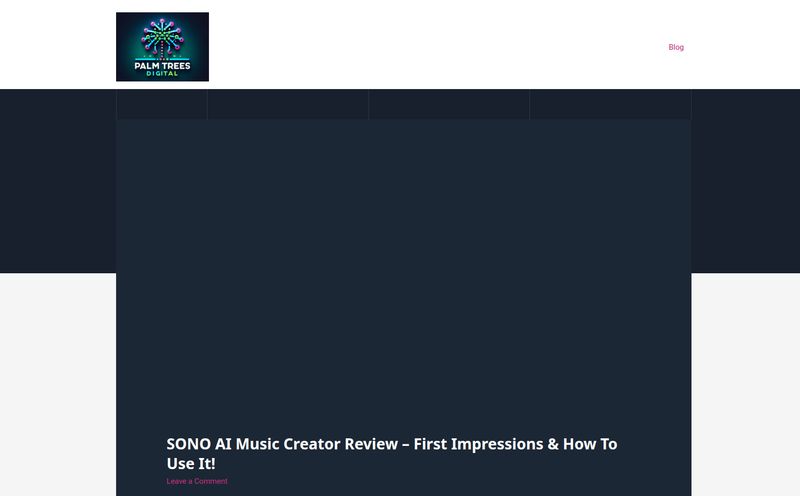As someone who spends probably way too much time spelunking in the digital caves of AI development, I get a little thrill every time I unearth a new tool or platform. You know the feeling. It’s that little dopamine hit when you find something weird, wonderful, or just plain useful. A few weeks back, I stumbled upon one such place: a site called iGPT.top. And wow, it was something else.
It wasn’t just another AI writer or image generator. It was a sprawling, almost chaotic, library of specialized GPTs. We're talking thousands of them. And then, just as I was getting ready to really dig in and write about it, I went back to the URL and was greeted by this:
“Not Found. The requested URL was not found on this server.”
Poof. Gone. A digital ghost town. So what was this place? What can we learn from its brief, bright existence? And what does it say about the absolute chaos of the AI world right now? Let's pour one out for a fallen soldier and investigate.
What Exactly Was iGPT.top?
Imagine walking into a massive public library, but instead of books, the shelves are lined with over 16,000 hyper-specialized AI assistants. That was iGPT.top. The homepage proudly proclaimed “已更新16929个GPTs” — 16,929 GPTs updated. That’s a staggering number.
It wasn't a single tool, but an aggregator, a directory. A bustling marketplace for custom-built AI bots, neatly sorted into categories like Work, Study, Entertainment, Health and Technology. You could find everything from a “Cinematic Photo Stylist” designed to turn your photos into movie stills to a “MrBeastBot” that emulated the personality of the famous YouTuber. Seriously. There was even one for Bazi, the Chinese form of astrology. It was a glorious, wild collection of human ingenuity powered by machine learning.
The Allure of Specialized AI Agents
This is the direction things are heading, isn't it? We’re moving past the novelty of a single, general-purpose AI like the base version of ChatGPT. The real magic is in the specialization. Why use a Swiss Army knife to uncork a bottle of wine when you have a dedicated corkscrew? Platforms like iGPT.top were tapping into this very idea, providing a space for these niche 'corkscrews' to be discovered.
Meet Prajñā AI: An Example of the All-in-One Powerhouse
While digging around, I was reminded of another interesting project I'd seen, something called 般若AI (Bōrě AI), which translates to Prajñā AI—Prajñā being the Sanskrit word for wisdom. This tool is a perfect example of the kind of powerful, multifaceted AI you could find listed on a site like iGPT. It’s not just a chatbot. It’s a writer, a coder, a translator, and an artist all rolled into one. It can draft your emails, help you refactor a tricky piece of Python code, translate documents between pretty much any language, and even generate high-resolution images from a text prompt.
Tools like Prajñā AI are often free, which is incredible, but it comes with the classic caveat of all AI-generated content: it still needs a human touch. You can’t just copy-paste a legal contract it drafts without having a real lawyer look it over. That’s just common sense, but you’d be surprised.

Visit 般若AI
The Wild West of AI Aggregators
Since OpenAI officially launched its GPT Store, we've seen an absolute explosion of copycats, competitors, and curators. It feels exactly like the early, chaotic days of the Apple App Store. It’s a gold rush, with developers scrambling to build the next big thing and aggregators like iGPT.top trying to create the definitive directory. It's exciting, but it’s also incredibly messy.
The quality control is all over the place, discoverability is a nightmare, and as we’ve seen with iGPT.top, these platforms can be incredibly transient. They pop up, gather a bit of buzz on Twitter or a niche subreddit, and then vanish without a trace. It’s the circle of life for tech startups, I suppose.
So, Where Did iGPT.top Go?
This is the million-dollar question, isn't it? I don’t have any inside information, but as someone who’s seen this movie before in the SEO and tech world, I can make a few educated guesses.
- Money Ran Out: The most likely culprit. Running a site with that much traffic and that many moving parts costs money. If a clear monetization strategy wasn't in place, the server bills eventually come due.
- Legal Troubles: Using “GPT” in your name can be a bit risky. OpenAI is protective of its branding, and a cease and desist letter isn't out of the question.
- Acqui-hired: Maybe a larger company saw the potential, bought the platform, and shuttered the public-facing site to integrate the technology or talent internally.
- A Passion Project That Ended: It could have simply been one or two developers who built something amazing in their spare time and just couldn't maintain it anymore. It happens. A lot.
Whatever the reason, its disappearance is a lesson in itself.
What Does This Mean for You, the User?
Okay, enough speculation. What's the practical takeaway from the tale of the disappearing AI library? It boils down to being a smart, slightly cynical consumer of new technology.
The Double-Edged Sword of Free AI Tools
Free is fantastic. I love free. But in the world of tech, ‘free’ often comes with strings attached, or in this case, a lack of them. There's no guarantee of support, no promise of longevity. It’s a blast to experiment with these tools, but building your entire business workflow or content strategy around a free, independent AI tool you just found is… risky. It might not be there when you need it most. So, by all means, play, but have a backup plan.
Finding Reliable Alternatives
If you're looking for that specialized AI experience, the most durable place to start is the official source: OpenAI's GPT Store. It's integrated directly into the ChatGPT Plus subscription, so while it's not free, there's a level of stability and trust that you won't find on a random .top domain. There are other reputable marketplaces and directories out there, but always do your due diligence. See who is behind the site, how long they've been around, and what the community is saying about them.
Your Questions About iGPT and AI Directories
What was iGPT.top?
iGPT.top was a large, third-party website that acted as a directory or aggregator for thousands of custom-built AI agents, often called GPTs. It categorized them and made them discoverable for users, but the site is no longer active.
Can I still access the GPTs that were on iGPT.top?
Probably not through the original site. The individual creators of those GPTs may have published them on other platforms, like OpenAI's official GPT Store or their own websites, but the iGPT.top library itself is gone.
What is a custom GPT?
A custom GPT is a version of a large language model (like ChatGPT) that has been given specific instructions, knowledge, and capabilities to perform a specialized task. Instead of a generalist, it becomes an expert in a narrow field, like a financial analyst, a creative writing coach, or a travel planner.
Are AI aggregator sites safe to use?
It varies. Reputable aggregators are generally safe, but you should always be cautious. Be wary of sites that ask for excessive permissions or personal information. Interacting with the GPTs themselves on a platform like OpenAI is generally secure, but clicking through to unknown third-party sites from an aggregator always carries some risk.
What was 般若AI (Prajñā AI)?
Prajñā AI was used as an example of the type of powerful, multi-functional AI tool one might have found listed on iGPT.top. It’s a standalone platform offering services from text and code generation to AI-powered image creation and translation.
Why do so many of these AI sites disappear?
The AI space is highly competitive and expensive. Many sites are small startups or passion projects that may run out of funding, face legal challenges, get acquired by larger companies, or simply be unable to keep up with the maintenance and competition.
Final Thoughts: Riding the AI Wave
The story of iGPT.top is a perfect snapshot of the current moment in AI. It's an era of explosive creativity, unparalleled access to powerful technology, and a healthy dose of chaos. For every stable, well-funded platform, there are a hundred brilliant, fleeting projects that burn brightly for a short time before winking out.
And honestly? I wouldn't have it any other way. This is what innovation looks like up close. It’s messy. It’s unpredictable. My advice? Be an explorer. Try the weird bots. Generate some silly pictures. See what these tools can do.
Just don't build your house on that cool new plot of digital land you found last Tuesday. The ground might not be as solid as it seems.
Reference and Sources
- OpenAI's official announcement of their GPT Store: Introducing the GPT Store



